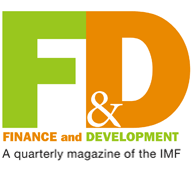The multimedia content on this page cannot be printed.
World Economy Under Stress
Stockholm Solutions
Stefan Ingves and Göran Lind
Sweden and other Nordic countries went through systemic financial crises in the early 1990s. A crucial lesson from the Nordic experience is the need for prominent state involvement in crisis resolution through restructuring and asset value protection.
The Road to Recovery: A View from Japan
Kenneth Kang and Murtaza Syed
Japan's financial crisis a decade and a half ago evokes an unmistakable sense of déjà vu amid the current turmoil. Japan's story shows that here is nothing like a crisis to bring to light—and build popular support for—much-needed reforms.
F&D on Financial Crisis Origins
The June 2008 issue of F&D examined the origins of the crisis and how it spread. See particularly A Crisis of Confidence ... and a Lot More and Outbreak: U.S. Subprime Contagion. Banking on More Capital looks at the capital adequacy rules for the banking system.
When Crises Collide
Stijn Claessens, M. Ayhan Kose, and Marco E. Terrones
Earlier episodes of recessions, crunches, and busts are sobering, suggesting that recessions following the current financial crisis may be more costly because they are likely to take place alongside simultaneous credit crunches and asset price busts.
Global Financial Turmoil Tests Asia
Kenneth Kang and Jacques Miniane
Any hope that Asia would escape the global financial crisis has by now evaporated. How Asia withstands the shock of both slower world growth and a spreading financial crisis is critical not only for the region, but for the world as a whole.
Also in This Issue
Ensuring Food Security
Maros Ivanic and Will Martin
Agricultural trade reform in developing countries can help improve food security by reducing the cost of food to poor people. But trade policy must be complemented by other measures to ensure sufficient food is available.
The Economic Geography of Regional Integration
Uwe Deichmann and Indermit Gill
Regional integration means much more than preferential trade access between neighbors. If it includes steps such as infrastructure investment and labor market liberalization, regional trade integration helps connect developing countries to world markets.
Departments
People in Economics
Picture This
The Ingredients of Sustained High Growth
Natalie Ramirez-Djumena and Jair Rodriguez
Sustained fast growth is not a miracle—it is possible for developing countries, as long as their leaders are committed to it and take advantage of the opportunities provided by the global economy.
Back to Basics
Book Reviews
The Arab Economies in a Changing World, Marcus Noland and Howard Pack
The Great Inflation and Its Aftermath: The Past and Present of American Affluence, Vito Tanzi


